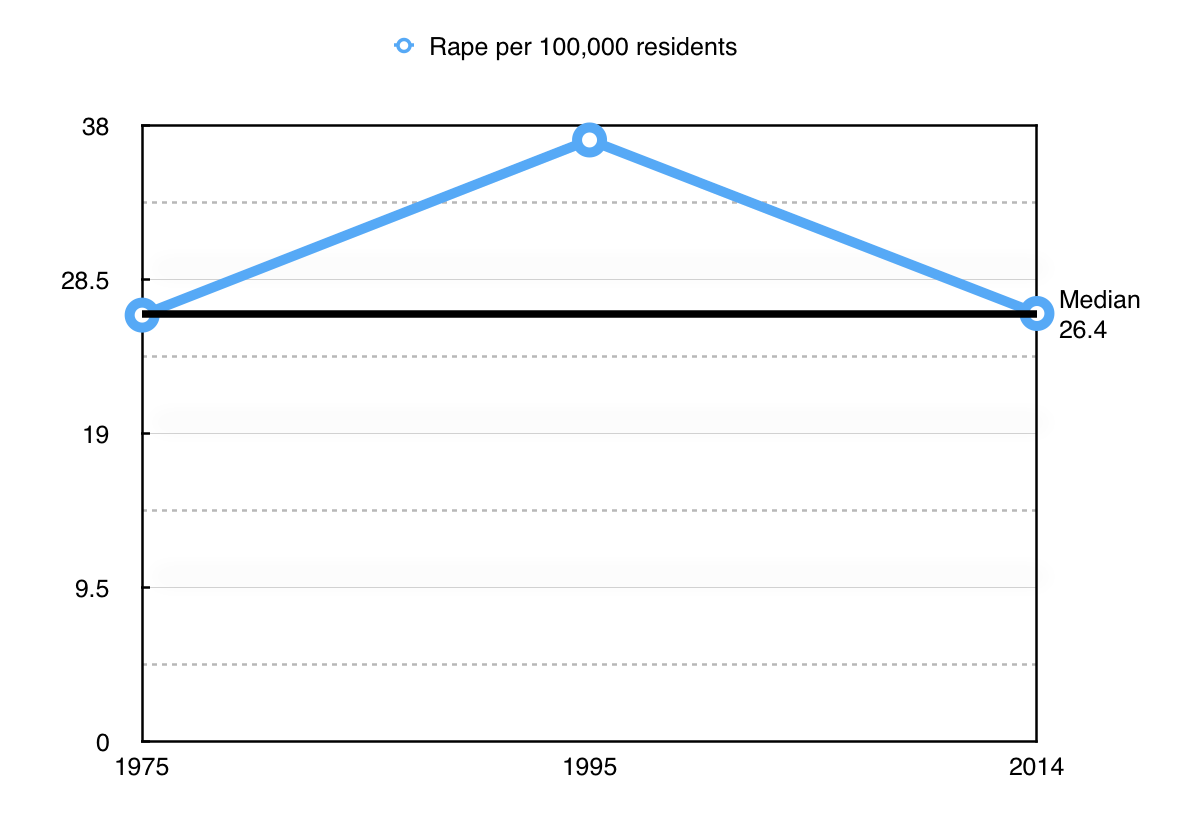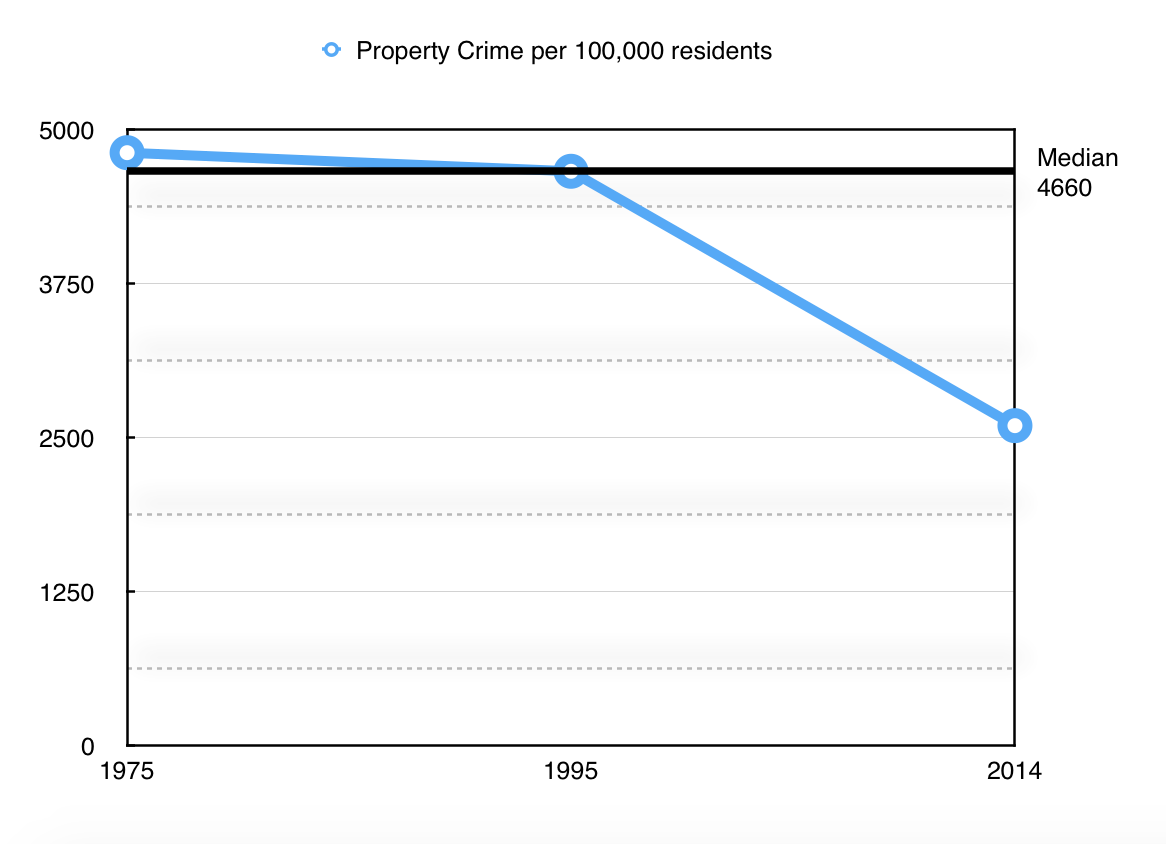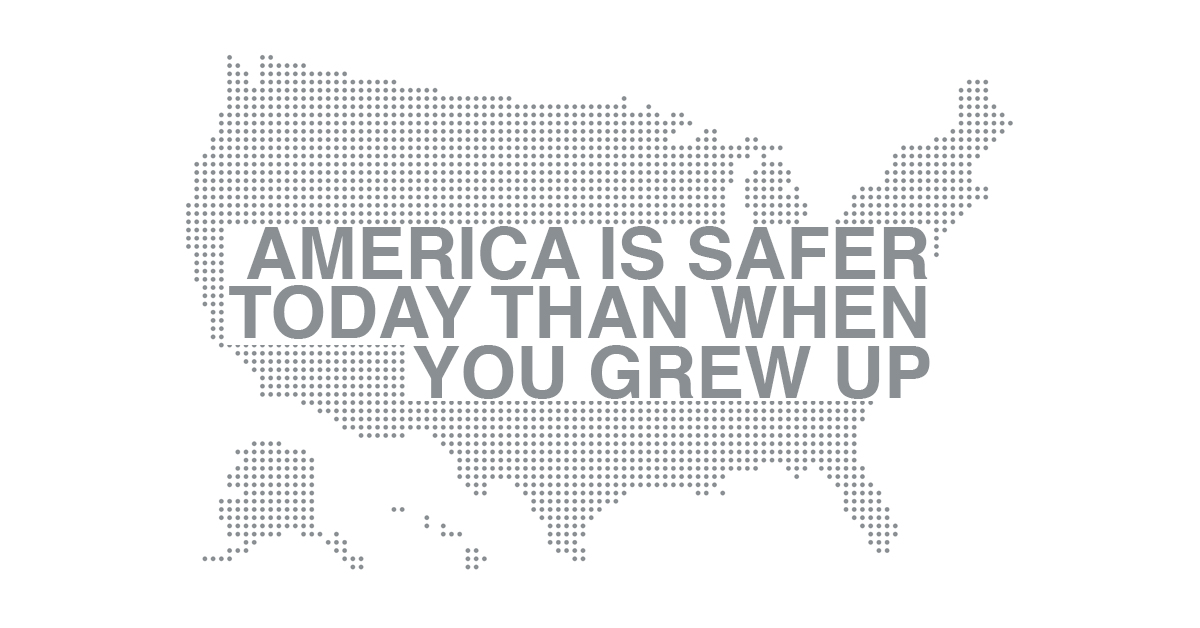I hear it all the time.
“Things just aren’t what they used to be.”
And I correct it all the time. “Actually, did you know that every measure of crime in America is down since you grew up? Did you know that things are so much better?”
Comparing 1975 to 1995 to 2014 Crime Stats
 Violent Crime data (includes things like murder, assault, rape)
Violent Crime data (includes things like murder, assault, rape)
- 1975 – 487.8 per 100,000 (source)
- 1995 – 713.6 per 100,000 (source)
- 2014 – 365.5 per 100,000 (source)

Rape data
- 1975 – 26.3 per 100,000 (source)
- 1995 – 37.1 per 100,000 – (source)
- 2015 – 26.4 per 100,000 – (source)

Property Crime data (includes burglary, larceny-theft, motor vehicle theft, arson, and things like that)
- 1975 – 4811 per 100,000 – (source)
- 1995 – 4660 per 100,000 – (source)
- 2015 – 2,596.1 per 100,000 – (source)
WOW!
See, this is data. While the narrative, that “this country is horribly dangerous” is powerful… there’s an inconvenient truth. Our nation is so-much-better than when we were growing up.
Less murder.
Less rape.
Less kidnappings.
Less home invasions.
Less carjackings.
Less E.V.E.R.Y.T.H.I.N.G.
Why Isn’t This Known?
Why is the news full of bad news when things are actually getting better? Why do people say, “I don’t want to have kids because I don’t want to bring them into this kind of world?”
Um, your community is significantly safer than the one you grew up in.
So why?
[insert commercial break]
[insert :15 trailer for 10 o’clock news]
[insert clicking on “breaking news” on Twitter]
Because bad news sells better than good news.

Leave a Reply